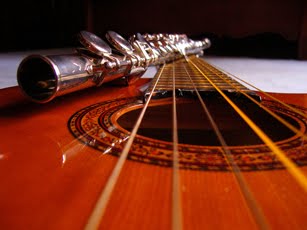 Holy Week to us when we were kids meant keeping silent the whole week. And especially when Good Friday -- the climax of the whole Catholic celebration -- came, a single peep was met with the admonition, “Silence! God is dead!”
Holy Week to us when we were kids meant keeping silent the whole week. And especially when Good Friday -- the climax of the whole Catholic celebration -- came, a single peep was met with the admonition, “Silence! God is dead!” Imagine how hard it was for kids with excess energy to be kept on a leash for almost a week inside the house; and that when school vacation had just begun. It must have been so stressful for us and our parents, especially my mother who was ready to maintain the solemnity of the feast with a belt.
Throughout the whole of Philippine society then, or at least in our small, gentle city of Dumaguete, the theme of Christ’s death was held with such respect and sobriety as to bring up the use of that common expression “you look like Good Friday” to describe someone with a sad face.
As part of the whole cultural phenomenon, Passion plays and biblical movies played in plazas and theaters as there was no TV yet. Twilight processions paraded the slain Savior in a glass casket in candle-lit streets crowded with people singing hymns. All of those to play up the sufferings that one man did go through so many years ago.
Holy Week was beyond any doubt, a repeated scene in my childhood that instilled not merely respect but also acceptance of the historical significance of the Gospel story. Yes, in spite of moments of atheistic spells in my adolescence. When the prodigal son finally came home, passion took on a different connotation.
Today, after having gone through several transformations in my spiritual belief, the passion of past Holy Weeks has turned into a less somber or death-shrouded period of meditation. Not because so many people nowadays spend the time more in gay outings or unabashed merriment, but because the missing part of the whole story – that of the resurrection – has taken a fixed hold of my mind and soul more than the death had ever done.
As a child, I acted like a child, Apostle Paul once said. I am glad I had those experiences and visual memories as a young boy for they led me to real faith in God. I only wished they had an equally effective way of removing all the pain and pathos they had inflicted on me when Easter Sunday came. Palm Sunday had seemed joyful enough; yet the thought of an empty victory parade into
Yes, today, a lot of people make a big thing or a big show of the resurrection as a religious feast or as a historical-cultural phenomenon.
The often repeated line in Paul’s letters to the early Christians glorying in the cross of Jesus (“I endeavored to know nothing among you except Christ crucified.”) has somehow led many believers to remain in the throes of the passion of Christ. It is not merely culturally acceptable and theologically accurate, it is also essentially appropriate for creatures bound to suffer and die. Humans that we are, we glory in the wounds of Christ for even the Apostles taught and lived that way. So it seemed.
However, in the context of Paul’s letters, we find that he was talking to unstable and struggling disciples for whom he suffered through his work. He had willfully borne the pain that Christ Himself bore so that those people might attain a maturity that would no longer require them to “glory in death” but to “glory in life”. Somehow, many disciples matured and we see this reflected in the succeeding letters of Paul and more so of John, whose vision of Christ surpassed all others in its sublimity and perfection. Not that suffering no longer held power to transform and discipline but that the level of transformation had reached a point where pain and suffering no longer held any direct challenge within the absorbing reality of eternal life in Christ.
Thus, Paul would write to the Colossians: “Set your hearts on things above, where Christ is seated at the right hand of God. Set your minds on things above, not on earthly things.” Likewise, John would proclaim to us all “perfect love” where “there is no fear”. Within such concepts, death loses its sting and dreariness. And there is no less passion in it either but a greater compulsion to reach out for the completion of our spiritual journey.
Hence, the unproductive cycle of Passion and Jubilation engendered by ceremonial practices by denominations tends to keep us bound within easy and comfortable zones. Yet, at the price of depriving us of the liberating experience of what the gospel is all about.
It’s all about life and the absence of death, pain and suffering. The victory has been won and well secured. Why compel ourselves to dwell anymore in one minute of virtual crucifixion, of pretended pain or of unfounded fear as if to offer Jesus again on the cross? No need to relive history; only to proclaim it.
Jesus Christ rules in heaven. The more we look up to where He is, the better for us all. Then we can truly live each day as if death never existed. Hallelujah!
(Photo above: Children in their innocence picture the indestructibility of life. Of such is the kingdom of heaven.)


No comments:
Post a Comment